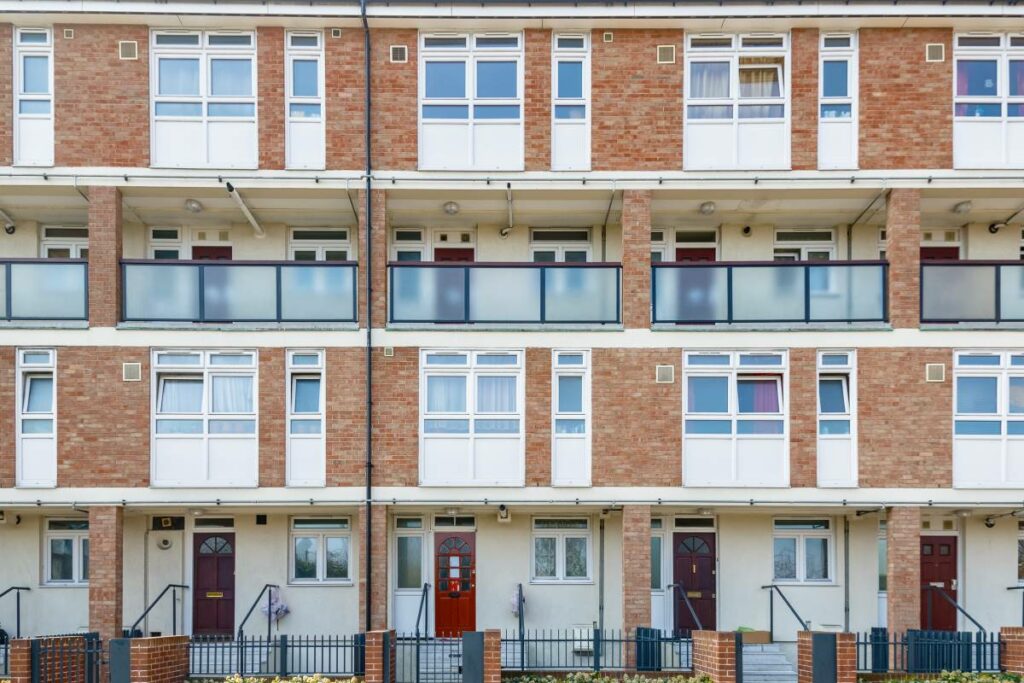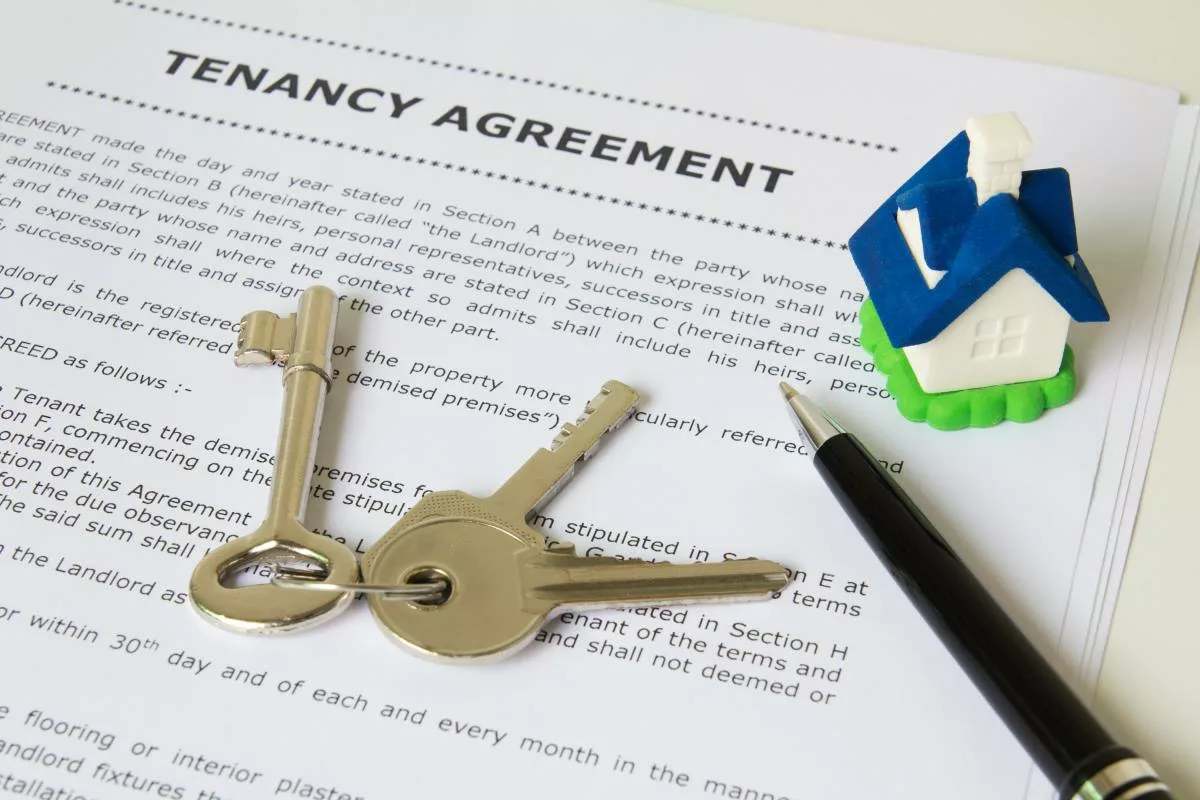Access to shelter is one of the basic requirements for human survival. In well-off nations such as the UK, the government seeks to provide housing for those unable to pay for accommodation. One type of assistance on offer is council housing. In this article, we examine this scheme in detail.

What Is Council Housing?
In the UK, there are 333 local governments called “councils.” Each local council can provide cheap accommodation in the form of a house, a flat, or a bungalow depending on your situation. The accommodation provided is known as council housing.
Though any adult can apply, there is a waiting list based on priority. Due to the few properties available, only people of the highest priority usually obtain a council house. We explain who falls into this category further in the article.
Council housing is not free of charge; people must pay rent for the property either with their wages or benefits. But the rent rates are highly subsidised, and a tenant will pay substantially less than the market value in the private sector.
Who Is Eligible for Council Housing?
The eligibility rules vary from one local authority to another. Generally, a person must be at least 18 to apply. But some councils consider anyone 16 or over. To apply, the individual must have a history with the area. For example, they may need to have lived in the vicinity for the last 5 years, work there, or have family ties (known as “local connection”). Some councils allow you to apply even if you don’t live in the area or have other connections.
Income is important. People earning a reasonable wage can pay for accommodation in the private sector and will not receive help from the local authority. If your application is accepted, a queuing system is in place to get on the council housing ladder. It is known as the waiting list. Once on the waiting list, you can also access the choice-based letting system (if your local council runs such a program).
Waiting List System
Council housing works on a waiting list scheme. After application, preference is based on a points-based system. People with more points are further up the list and more likely to receive a council home. Individuals in the following categories are awarded additional points and thus have a greater chance of receiving a council property:
- Homeless people
- Living in unsuitable accommodations such as:
- Conditions that are:
- Cramped
- overcrowded
- A home that worsens a person’s medical condition (e.g., dampness and mold)
- Conditions that are:
- People with severe medical conditions or disabilities
Choice-Based Letting System
Some councils operate a scheme where available properties are published, and people on the waiting list can apply. Known as the bidding scheme or bid for a council house, you can find out more about this scheme on this homeless charity website called Shelter.
How To Apply for Council Housing?
To apply, you must make contact with your local council. You can begin through this link. You must show identification (such as a birth certificate, driving license, passport, etc.) and your address history to prove continuous residency.
Address history is generally required for the last 3 years, though it can vary from one council to another. Documents that support address history include:
- Bank statements
- Utility bills
- Council tax bills
- Credit card statements
- Tenancy agreement
- Insurance documents
- Polling cards
What Happens After The Application?
There is no simple gimmick or trick to get a council house fast. After the application, a person has to wait until a council can offer a property. Sometimes, a housing association may step in and offer you a home.
If you are offered a property, you’ll have a short time to view and accept. If you don’t take the property, you’ll continue to stay on the waiting list.
Due to the enormous weight of applicants and the shortage of housing, only those people high on the waiting list will receive a council home.
Tenancy Types
By obtaining a council property, you have the right to rent the property from the council at a low price. There are different types of tenancy, and what is offered is based on your council. You must pay rent through your wages or any benefits to continue to live at the property.
Introductory Tenancy
An introductory tenancy is for people new to the council house scheme. These schemes last for a 12-month trial period. After 12 months, you become a flexible or secure tenant (see below) unless the council:
- Extends the tenancy by a further 6 months, or
- Take eviction proceedings against you
Flexible Tenancy
The council awards you the tenancy for a period of time. The time is typically five years though it could be between two and five years. After the tenancy expires, the council could decide to:
- Provide another fixed-term agreement
- End the agreement
- Offer a secure tenancy
If the agreement is terminated, they will offer a reason and the opportunity to appeal the decision.
Secure Tenancy
The property is in your lifelong care if you become a secure tenant. A person can live in it until they pass away. Under this agreement, you can:
- Make home improvements with the council’s permission
- Transfer tenancy to another person in some scenarios
- Take advantage of the Right To Buy and purchase the property
- Swap the home with other council tenants (with agreement from the council)
- Rent the rooms out without renting out the entire property
A secure tenancy can end if the terms and conditions are broken.
Joint Tenancy
In a joint tenancy agreement, all tenants share the responsibility for the property. Joint tenancy can occur anytime with the significant other from a marriage or civil partnership. Couples that are cohabiting or relatives such as a brother or sister can also become joint tenants. They must have resided for at least 12 months before a joint tenancy can begin.
Maintenance and Repairs
As the council owns the property, they are the landlord. As the proprietor, the council has to carry out changes, maintenance, and repairs. This means they will take responsibility for significant upkeep such as ensuring:
- The structure of the home is in suitable condition (like the roof, walls, and windows)
- The electric and gas appliances function correctly
- The shared sections of the estate or building are well maintained
On the other hand, the occupant is responsible for things such as:
- Fitting curtains
- Cutting spare keys
- Paying for damage caused by themselves or their visitor
An Affordable Home for Those in Need
Council homes are not easy to acquire. Only people with the highest priority are awarded these types of social housing. However, if you are lucky enough to obtain a council home, you can look forward to decent accommodation without the hefty rent prices in the private sector. If you wish to apply, start by contacting your local council.




